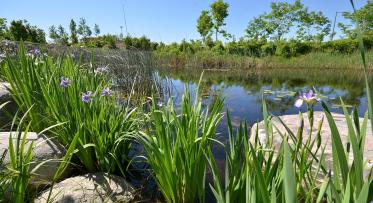What This Jelly Blob Tells Us About Water Quality
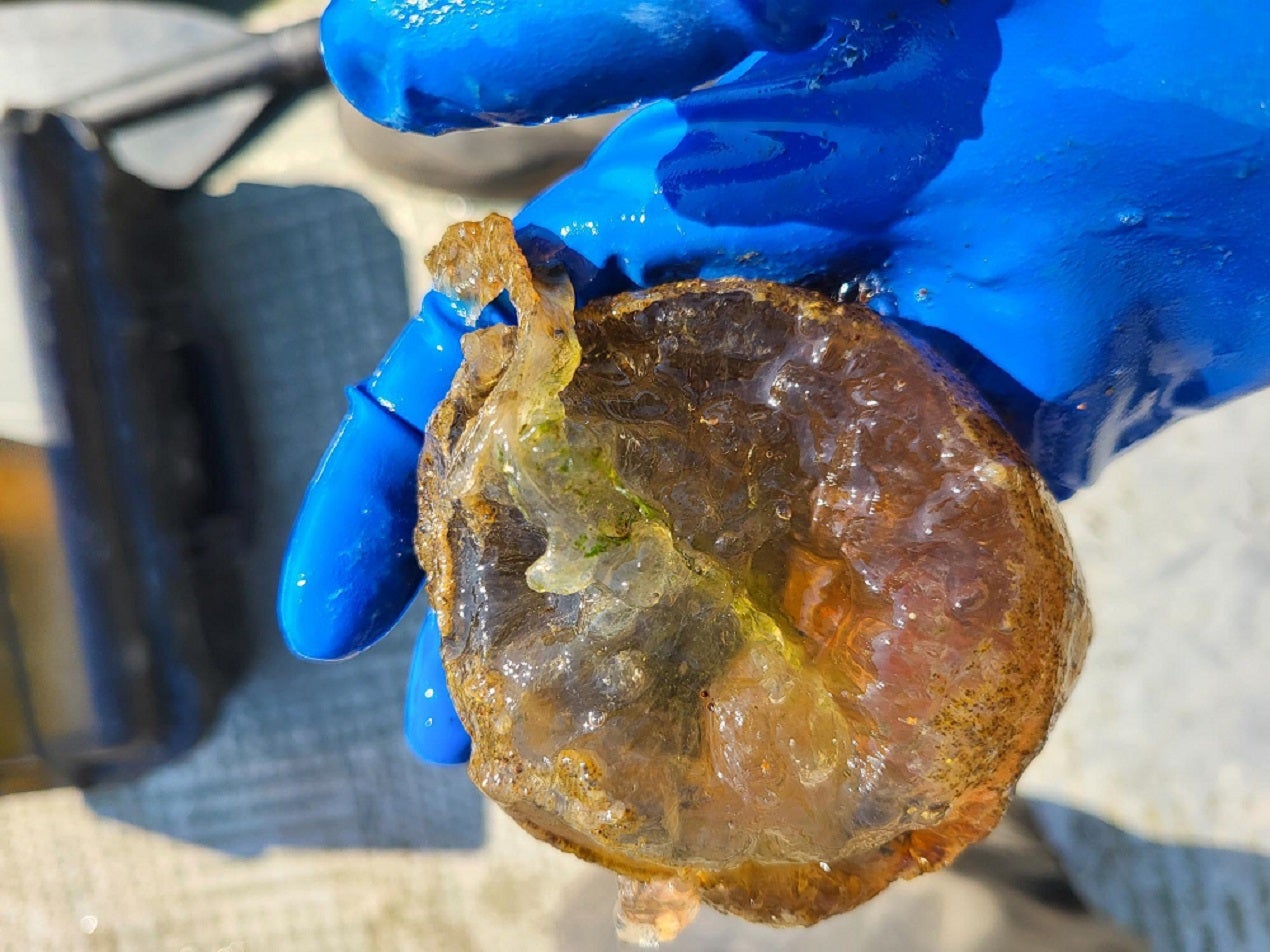
POSTED: FEBRUARY 11 , 2025
In this blog:
-
In 2024, our team, including partners at Toronto and Region Conservation Authority (TRCA), spotted various aquatic species in and around the new mouth of the Don River.
-
One of these creatures, a bryozoan, is an encouraging sign of good water quality!
-
Before the Port Lands Flood Protection project, the areas near the old mouth for the Don River (the Keating Channel and the Polson Slip) were almost empty of fish. In 2024, 29 different fish species were found – a huge increase.
Bryozoans: slime made of tiny aquatic invertebrates
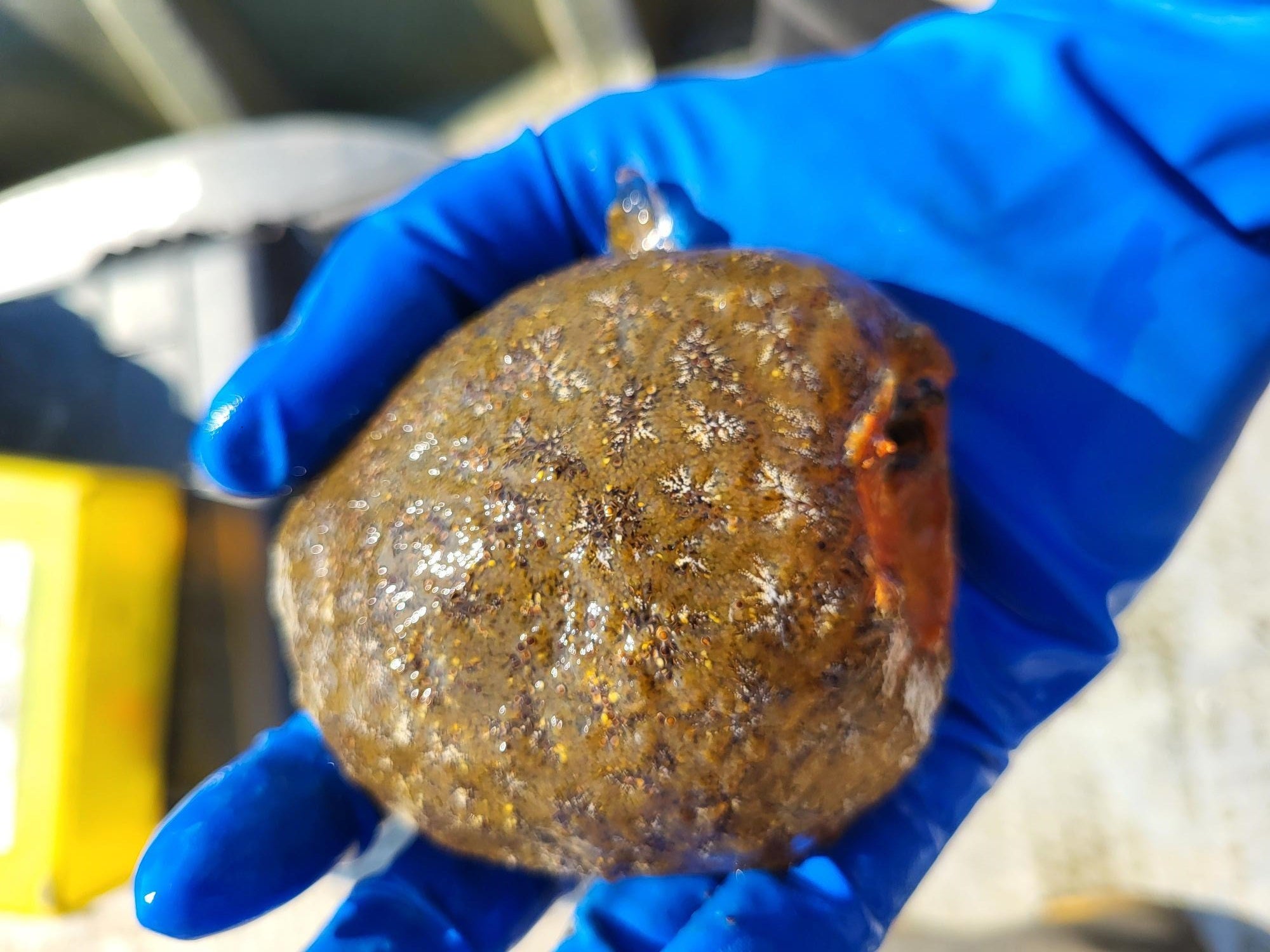
The bryozoan found in the new mouth of the Don River was about the size of a human fist – relatively small compared to others that can grow as big as 30 cm in diameter.
In the fall, TRCA monitoring teams found a slimy ball of jelly on some of their equipment: a bryozoan colony. Also called ‘Moss Animals’, these jelly-like blobs are made up of thousands of microscopic invertebrates that live in a colony.
Bryozoans are filter feeders, eating plankton, algae, and bacteria. They clean the water as they feed. Their presence means the water quality is good. So, seeing one in the new mouth for the Don River is a sign that efforts to clean up the Don River are working.
Bryozoans are quite common and can be found on every continent except Antarctica. In freshwater, they form colonies during the warmer months, attaching to things such as docks, buoys or sticks. People usually notice them in the fall, when the colonies are biggest, and equipment is being taken out of the water before the winter.
More fish finding homes in the Don River
TRCA regularly monitors fish populations throughout the Toronto area. Before the Port Lands Flood Protection project, areas near the old mouth of the Don River (the Keating Channel and the Polson Slip) had very few fish. In 2024, they found 28 different fish species, a huge increase. Our design team observed an additional species, an Emerald Bowfin in the new river, bringing the total number of fish species to 29.
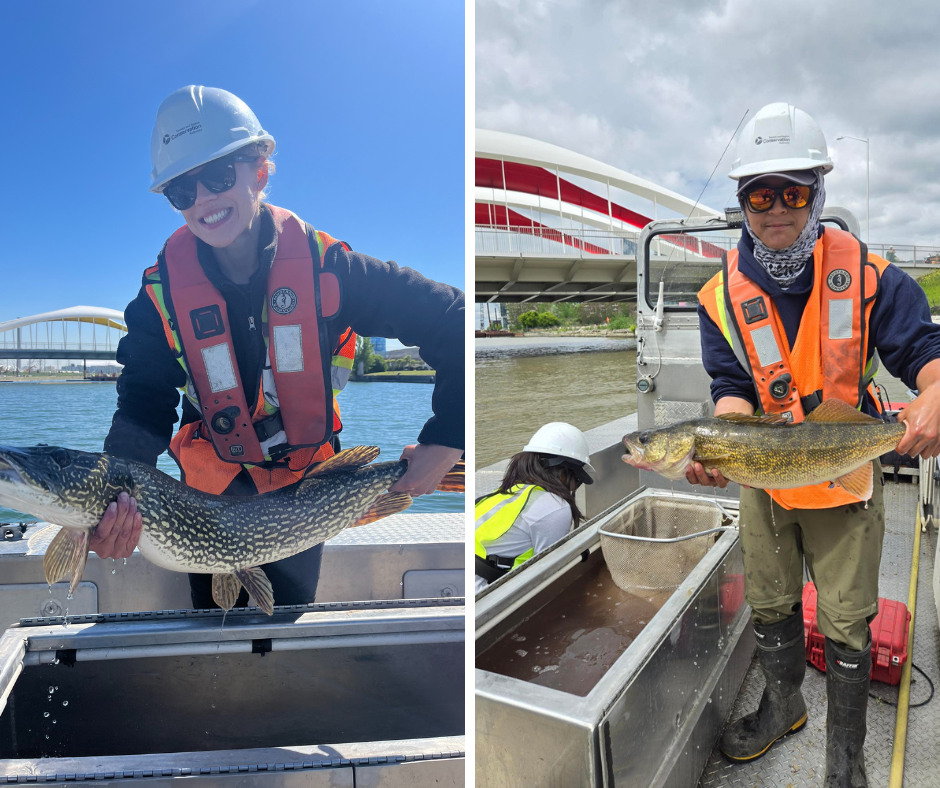
TRCA staff holding a Northern Pike (left) and Walleye (right) during electrofishing surveys. Electrofishing allows biologists to record the species present, plus their size and weight. The fish are returned to the water unharmed soon after they are measured.
Fish species found include Northern Pike, Largemouth Bass, White Bass, Rock Bass, Yellow Perch, Quillback, Gizzard Shad, Pumpkinseed, Walleye, White Sucker, Banded Killfish - a variety of Trout and Salmon, and minnows such Emerald Shiner and Fathead Minnow.
Finding a living fossil
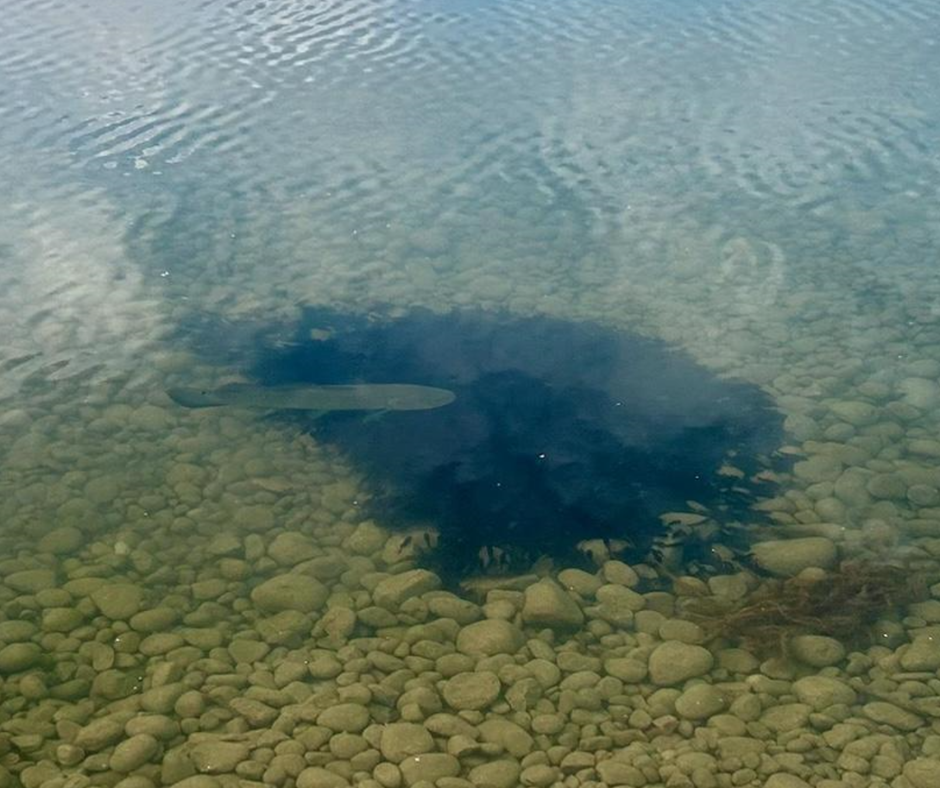
Emerald Bowfin spawning in the new mouth of the Don River.
One of the designers of the new parks in the Port Lands, from Michael Van Valkenburg and Associates, took a photo of an Emerald Bowfin guarding its nest in the new river channel. Often called a ‘living fossil’, Bowfin are one of only two surviving species of fish from a group that first appeared during the Early Triassic period – 250 million years ago. These fish still have many features from their ancestors, and can breathe both water and air!
What does this mean?
As part of the Port Lands Flood Protection project, we’ve carefully designed a new river that supports aquatic life. The increase in fish diversity shows that our efforts are helping to attract more fish to the area!
Stay up to date on the exciting work that is happening along Toronto's waterfront by signing up for our newsletter.



